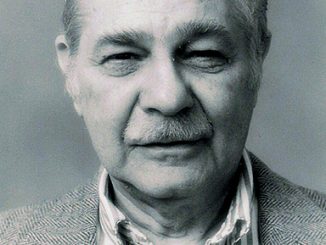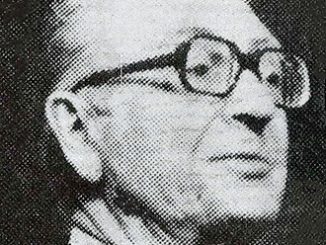Since his reelection, we have relentlessly denounced the war Donald Trump is waging against Europe. In six months, he has shattered 80 years of the Western alliance, the pact that had guaranteed peace on our continent. The world is now crumbling beneath the feet of a fragile president. In six months, Donald Trump has methodically dismantled the legacy of our fathers: this Western alliance that nurtured peace in Europe is now nothing more than an epitaph.
His pretext? To eradicate a so-called « deep state. » To what end?

A global chaos on which Russia, China, and North Korea are feasting. Europe, meanwhile, is being extorted: more than $100 billion each month. Under the pretext of purging America, he has offered the world on a silver platter to rogue regimes. Russia advances, China dominates, North Korea parades. And Europe? Europe pays. One hundred billion dollars a month, the price of our servitude.
Table of Contents
by Joël-François Dumont — Paris, September 5, 2025 —
Introduction: The Twilight of the West
Watching our leaders bow down is a spectacle that has ceased to be political and has become a tragedy. Watching our leaders vie with each other in sycophancy while we are subjected to this racket is a daily humiliation. What a waste. How can one not doubt the mental health of the most powerful man in the world?
Meanwhile, in Beijing, the spectacle is elsewhere. His friend Putin, Xi, and the unpredictable « Rocket Man » chat about immortality, smirking at the faltering health of their American « partner. » The quiet strength of tyrants feeds on the feverishness of democracies. Where democracies stammer, tyrants project strength.
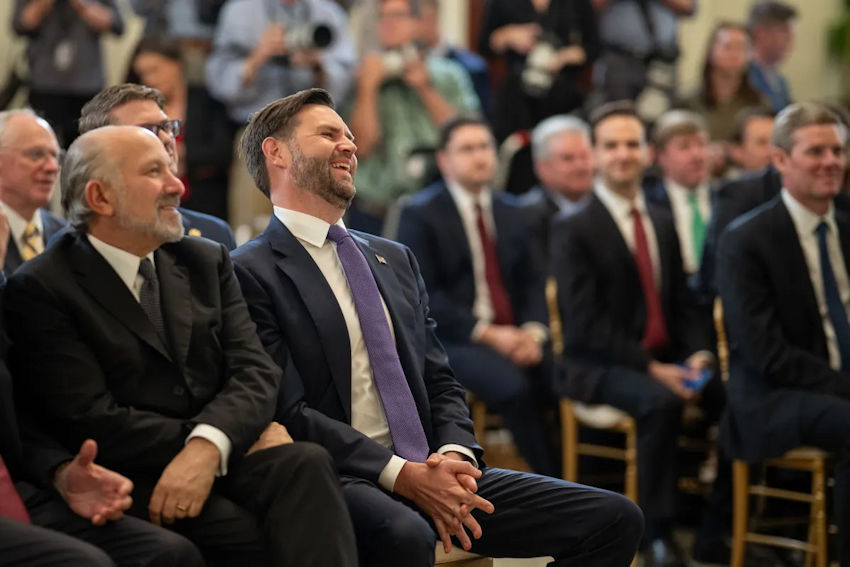
The time for criticism is over. Faced with a presidency that is not a rehearsal, but a fateful aggravation, we must open our eyes to understand that this is an act of self-defense.
Act 1: The Betrayal. In just six months, the Western alliance, the guarantor of 80 years of peace in Europe, has been sacrificed on the altar of his crusade against the « deep state. » This strategic vacuum was immediately filled by authoritarian powers: Russia, China, and North Korea, who are capitalizing on the chaos.

Act 2: The Racket. Europe is no longer treated as a partner, but as a vassal. Every month, more than $100 billion is extorted from it. The image of our leaders bending the knee to this predation has become the distressing symbol of our impotence.
Act 3: The Personal Unknown. Beyond politics, it is the man who raises questions. His fragility, now a topic of conversation between Putin, Xi, and Kim Jong-un in Beijing, contrasts the calculated opacity of authoritarian regimes with the instability of a democracy adrift. By choosing J.D. Vance as his potential successor, Trump is preparing the future of an America that already sees us as an adversary.

Our approach is not to kick a man when he’s down. It is a duty to sound the alarm. When limits are so thoroughly crossed, defending oneself from the disastrous consequences is no longer a right, but a necessity… It is about preventing a funeral procession from dragging us all down with it. This second term is not a mistake being repeated; it is a sentence being carried out.
The publication this morning of an article by the Berliner Morgenpost [01] has convinced us that it was time to openly question the health of a president and his fitness for office.
Our approach is not to kick a man when he’s down. It is a duty to sound the alarm. When limits are so thoroughly crossed, defending oneself from the disastrous consequences is no longer a right, but a necessity… It is about preventing a funeral procession from dragging us all down with it. This second term is not a mistake being repeated; it is a sentence being carried out.
I. The Disappearance of Labor Day and the Anatomy of a Rumor
Early September 2025 saw the emergence of an intense wave of speculation about the health of U.S. President Donald Trump, triggered by a sequence of events that perfectly illustrates the dynamics of information in the digital age. This episode serves as a microcosm for the larger question of the president’s health: a combination of observable physical signs, a tightly controlled and often dismissive White House communications strategy, and a hyper-skeptical media and public environment where trust is a rare commodity. The incident transformed a lack of information into a global news event, exposing a critical vulnerability in the administration’s communication strategy.
The Information Vacuum
The catalyst for this crisis was the president’s unusual absence from the public stage. After his last public engagement, a Cabinet meeting on August 26, Donald Trump disappeared from view for six consecutive days, including over the long Labor Day weekend.[02][03][04] For a president known for his media omnipresence and penchant for publicity, this prolonged absence created a striking information vacuum.[05] The administration provided no proactive explanation, contenting itself with retroactively justifying the absence due to the holiday weekend, an explanation many observers found unconvincing.[03][06]

Donald Trump’s political brand is built on the constant projection of strength, vitality, and uninterrupted activity.[07][08][09] His absence, therefore, constituted a sharp break from this carefully cultivated image. Without credible official communication to fill this void, the space was quickly occupied by online speculation.
The Social Media Storm
The void left by the presidential silence was fertile ground for an explosion of rumors on social media platforms. Hashtags like « #TrumpIsDead » and « #WhereIsTrump » quickly went viral on X (formerly Twitter), generating over 104,000 mentions and 35.3 million views in a matter of days.[09][10] This frenzy was fueled by a flood of conspiracy theories and disinformation. False claims of road closures near Walter Reed National Military Medical Center circulated, along with manipulated or out-of-context photographs, such as an AI-enhanced image purporting to show the after-effects of a stroke, or an old photo of an ambulance at the White House from Joe Biden’s presidency.[10]

This situation demonstrates a fundamental weakness in the White House’s communication strategy: its almost total reliance on the president’s physical presence and social media posts as the primary « proof of life » and vitality. When this content production stops, the administration seems to lack sufficiently credible alternative communication channels to stem speculation. The official voice of the press secretary, for example, proved insufficient to quell the rumors, forcing the president to intervene personally once the narrative had already been shaped by his opponents and conspiracy theorists.
The Official Response and Its Impact
The response from the administration and the president himself was late and purely reactive. On Sunday, amid the media storm, Donald Trump posted a message on his Truth Social platform: « NEVER FELT BETTER IN MY LIFE. »[03][06][10][11][12] He then held a press conference the following Tuesday, during which he called the rumors « fake news. »[05][06][13] While these interventions put an end to the most extreme rumors, such as that of his death, they did nothing to address the underlying concerns about the visible physical symptoms that had initially fueled the speculation.
The impact of this uncertainty was tangible beyond social media. On Polymarket, a cryptocurrency-based prediction market, the odds of a Donald Trump resignation saw a notable spike, rising from under 3% to over 4.5% at the height of the rumors, illustrating how perceived instability around the president’s health can translate into concrete financial speculation.[03] This episode thus highlighted a cycle of crisis communication rather than a stable information strategy, a pattern that would be repeated in the handling of broader health issues.
II. The Official Record: Deconstructing the White House Medical Reports
To objectively assess President Trump’s health, it is imperative to establish a factual baseline from the information officially released by the White House. These documents constitute the official narrative, the benchmark against which all other observations, analyses, and speculations must be compared. The central document in this narrative is the memorandum released following the president’s annual physical exam in April 2025.
The April 2025 Annual Physical Exam
On April 11, 2025, President Trump underwent his annual physical examination at Walter Reed National Military Medical Center. The results, detailed in a memorandum from the Physician to the President, Dr. Sean Barbabella, and made public on April 13, paint a picture of a man in excellent physical and cognitive condition.14][15]
Vital Statistics: As of the exam date, the president was 78 years and 10 months old. He stood 75 inches tall (approx. 6’3″) and weighed 224 pounds (approx. 101.6 kg). His blood pressure was 128/74 mmHg, and his resting heart rate was 62 beats per minute.[14] The report highlights a 20-pound weight loss (approx. 9 kg) since his 2020 exam, which moved his Body Mass Index (BMI) from the « obese » to the « overweight » category.[16]
Diagnostic Summary: Examination of the major body systems revealed no significant abnormalities. Cardiac (electrocardiogram and echocardiogram), pulmonary (lungs clear on examination and CT scan), neurological, and gastrointestinal exams were all normal.[14] Blood tests showed an optimal lipid panel, with total cholesterol at 140 mg/dL and LDL (« bad ») cholesterol at 51 mg/dL.[14]
Medical History: The report lists the president’s known medical history, including well-controlled hypercholesterolemia, seasonal allergies, a past COVID-19 infection, well-managed rosacea, diverticulosis, and a benign colon polyp discovered during a July 2024 colonoscopy.[14] It also mentions the scar on his right ear from the July 2024 assassination attempt.[14][16][17]
Physician’s Conclusion: Dr. Barbabella’s summary is unequivocal: « President Trump remains in excellent health… and is fully fit to execute the duties of Commander-in-Chief and Head of State. »[14][16][17] The report praises his « active lifestyle, » which includes « frequent victories at golf events, » as a significant contributor to his well-being.[14][16]
The following table summarizes the key data from this official physical exam.
| Metric | Result | Medical Classification / Normal Range | Source |
| Age | 78 years, 10 months | N/A | Physician’s Memo, April 13, 2025 |
| Weight | 224 lbs (101.6 kg) | N/A | Physician’s Memo, April 13, 2025 |
| Body Mass Index (BMI) | 28.0 | Overweight | Physician’s Memo, April 13, 2025 |
| Blood Pressure | 128/74 mmHg | Elevated | Physician’s Memo, April 13, 2025 |
| Total Cholesterol | 140 mg/dL | Optimal <200 mg/dL | Physician’s Memo, April 13, 2025 |
| LDL Cholesterol | 51 mg/dL | Optimal <100 mg/dL | Physician’s Memo, April 13, 2025 |
| HDL Cholesterol | 77 mg/dL | Desirable >40 mg/dL | Physician’s Memo, April 13, 2025 |
| MoCA Score | 30/30 | Normal | Physician’s Memo, April 13, 2025 |
However, a closer look at the timeline of White House communications reveals a significant temporal contradiction that calls the completeness and transparency of this report into question. In the « Extremities/Musculoskeletal » section of the April 2025 summary, it is explicitly stated: « normal blood flow and no swelling. »[13] Yet, just three months later, in July 2025, the White House was forced to release a formal diagnosis of chronic venous insufficiency (CVI), a condition whose primary symptom is precisely leg swelling.[02][05][07][08][18]
This inconsistency raises several troubling hypotheses. Either the CVI is a new condition that developed and progressed with exceptional speed between April and July. Or the April exam was not as comprehensive as claimed, or its findings were selectively reported. A third possibility is that the swelling was already present in April but was deemed insignificant or was intentionally omitted from the public summary. Whatever the explanation, this chronological contradiction undermines the credibility of the April report. It forces the critical reader to question the rigor and transparency of the entire document. If a visible and subsequently diagnosed condition was not mentioned, what other details might have been omitted or downplayed? This dissonance transforms the medical report from a simple statement of fact into a contested piece of evidence in a broader narrative about presidential transparency.
III. The Tale of Two Symptoms: The Bruised Hands and Swollen Ankles
Beyond the official medical reports, it is two visible and persistent physical signs that have fueled the majority of public and media concern. An analysis of how the administration has managed communication around these symptoms reveals a struggle to maintain a coherent and medically plausible narrative, characterized by evolving explanations and apparent contradictions.
The Mystery of the Bruised Hands
Bruises on the president’s hands have been observed recurrently, becoming a point of fixation for observers.
Timeline of Appearances: The first sightings of these marks date back to the spring of 2024.[07][08] They gained international attention in February 2025, when a Getty photographer captured a close-up image of the president’s right hand, covered in makeup but revealing a large bruise, during a meeting with French President Emmanuel Macron.[07][08][19] Throughout the summer of 2025, new bruises appeared, including on the left hand, which revived speculation.[18]
Evolving Explanations: Faced with repeated questions, the White House narrative has shifted over time.
- The Personal Anecdote (2024): Initially, Trump himself attributed the mark to an « overly zealous handshake » from a supporter, claiming the Secret Service had to intervene.[07][08]
- The Official Explanation (February 2025): Press Secretary Karoline Leavitt then formalized this theory, adding that daily use of aspirin, a mild blood thinner taken as part of a cardiovascular prevention regimen, could facilitate bruising.[02][07][11][20] She stated that the president « meets more Americans and shakes their hands on a daily basis than any other president in history. »[08][18]
- The Left-Hand Problem: This explanation was undermined when a new bruise appeared on the president’s left hand. As he is right-handed, he primarily uses his right hand for handshakes. Despite this logical inconsistency, the White House maintained the same explanation.[19]
Attempts at Concealment: Rather than easing concerns, clumsy attempts to hide the bruises with « mismatched concealer » and « pasty » makeup only drew more attention. C-SPAN cameras zoomed in on these cover-up attempts, amplifying the mystery.[06][07][08]
The Appearance of Swollen Ankles
In July 2025, a new symptom was added to the picture.
The Diagnosis: On July 13, at the FIFA Club World Cup final in New Jersey, photographs showed the president with visibly swollen ankles.[07][08] A few days later, the White House confirmed that doctors had diagnosed him with chronic venous insufficiency (CVI).[07][08] The official medical explanation describes a common condition in people over 70, where the valves in the leg veins do not work properly, causing blood to pool and leading to swelling.[11][18]
White House Assurances: The president’s physician described the condition as « benign and common, » and specified that extensive testing had ruled out more serious issues such as deep vein thrombosis, heart failure, kidney failure, or arterial disease.[07][11][18][19]
Expert Contradiction and Dissent
The White House’s communication strategy of addressing each symptom in isolation and reactively has clashed with the analysis of independent medical experts. Dr. Peter Henke, former chair of the American Heart Association’s vascular council, told New York Magazine that the bruises on Trump’s hand are « unrelated to venous insufficiency. »[07] Other experts have corroborated this, pointing out that CVI symptoms primarily affect the legs, not the hands.[18]
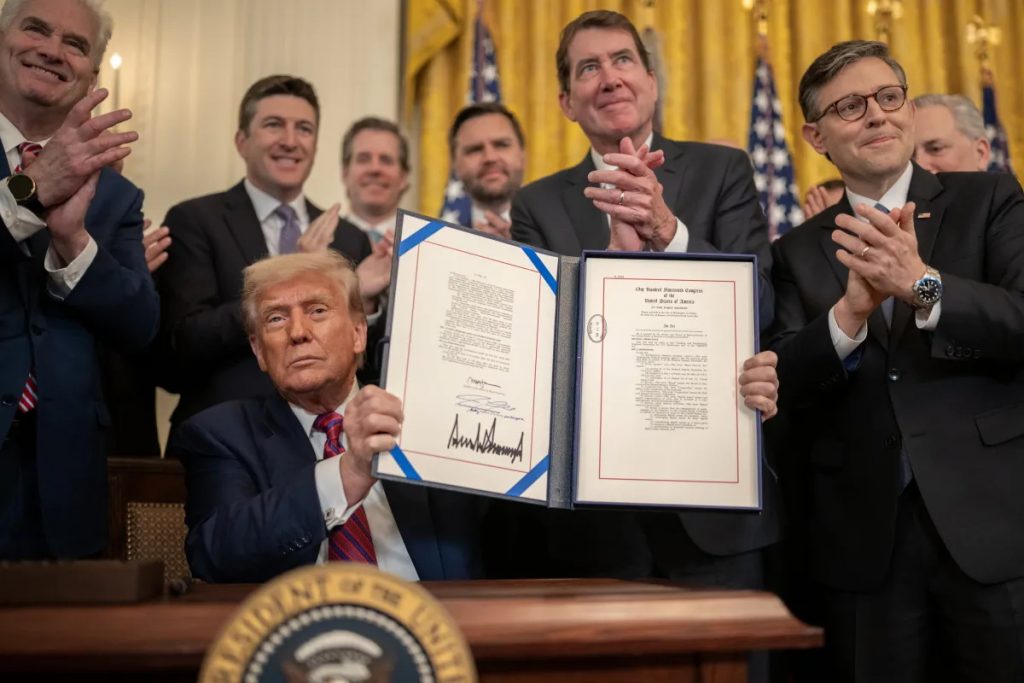

..For psychologists, it’s almost impossible to talk about Donald Trump without using the word narcissism. Asked to sum up Trump’s personality for an article in Vanity Fair, Harvard psychologist Howard Gardner replied, « Remarkably narcissistic. » George Simon, a clinical psychologist who conducts seminars on manipulative behavior, says Trump is « so classic that I’m archiving video clips of him to use in workshops because there’s no better example » of narcissism…
This expert dissent creates a major flaw in the official narrative. The White House has provided a diagnosis for the ankles (CVI) and an explanation for the hands (handshakes/aspirin), but has never offered a unifying theory. This piecemeal approach gives the impression of a cover-up and invites speculation about a more serious, systemic underlying condition that the administration is unwilling to disclose. The public and the media perceive these symptoms collectively as « signs of ill health. » The absence of a comprehensive medical theory from the White House to explain the constellation of symptoms leads to a logical deduction: either the White House doctors are incompetent, or they are hiding a diagnosis (e.g., a cardiac, renal, or systemic vascular issue) that could explain both phenomena. This failure to provide a holistic narrative is the primary driver of persistent suspicion.
IV. The Cognitive Question: Reconciling a Perfect Score with Public Performance
The most sensitive and potentially most critical aspect of the president’s fitness for office concerns his mental acuity. On this front, the gap between the administration’s official narrative and public observations is particularly stark. The White House relies on a single data point to certify the president’s cognitive excellence, while hours of public recordings suggest a more complex and, to some experts, more troubling picture.
The Official Certification of Excellence
The White House’s defense of President Trump’s cognitive health rests entirely on a specific test result.
The MoCA Test: The April 2025 physical exam report states that the president achieved a perfect score of 30 out of 30 on the Montreal Cognitive Assessment (MoCA).[14][16][17] The MoCA is a widely used screening tool for detecting mild cognitive impairment, such as that associated with the early stages of dementia.
Historical Context: Donald Trump has a long history of boasting about his cognitive test results, often referencing a test he took in 2018 and the five words he had to memorize (« Person. Woman. Man. Camera. TV. »).[15][21] It is relevant to note that the creator of the MoCA test himself, Dr. Ziad Nasreddine, stated that results from 2018 would be outdated and irrelevant in 2024, highlighting the strategic importance of the new perfect score in 2025 for the White House’s narrative.[15]
The Counter-Narrative of Public Performance
In direct contrast to this perfect score, the president’s public appearances have provided numerous examples of what some observers and experts describe as erratic behavior.
Verbal Slips and Factual Errors: Recent incidents have raised questions. For example, a Truth Social post where he appeared to forget the day of the week,[02] or factually incorrect claims during speeches, such as stating that his uncle knew Ted Kaczynski, the « Unabomber. »[22] These incidents follow a pattern observed during the campaign, where he notably confused his opponent Nikki Haley with former House Speaker Nancy Pelosi.[23]
Rambling and Tangential Speeches: More than just slips of the tongue, it is the very structure of his unscripted speeches that has drawn attention. Experts describe a tendency to « ramble unthinkingly » and to change subjects without maintaining a « coherent narrative, » a style Trump himself once called « the weave. »[22] This behavior has been observed during Cabinet meetings, press conferences, and campaign rallies.[22]
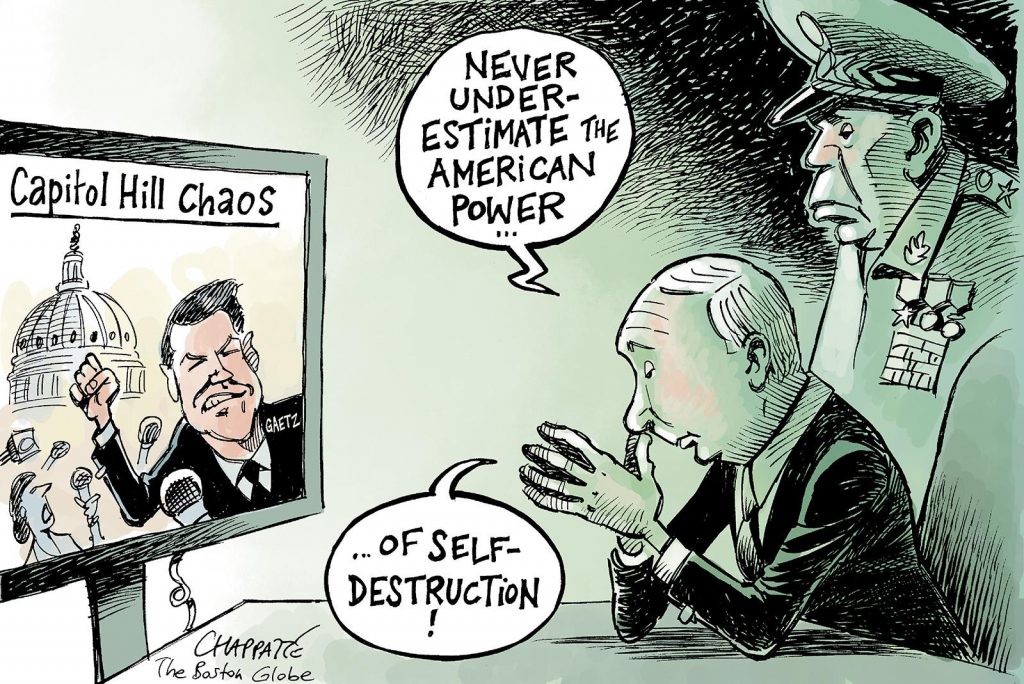
Analysis from Psychology and Psychiatry Experts
Academic experts have offered analyses that go beyond the simple MoCA result, focusing on the president’s patterns of thought and speech.
Professor Harry Segal’s Analysis: This Cornell University psychology lecturer identified two key features in Trump’s discourse [22]:
- Lack of Self-Regulation: Abrupt and irrelevant topic changes demonstrate an inability to maintain a coherent narrative thread.
- Confabulation: Described as the act of taking a real idea or event and adding elements that did not happen, all presented as an authentic memory. The Unabomber story is a prime example. Professor Segal concludes that this level of thinking shows deterioration.
Professor Richard A. Friedman’s Assessment: This professor of clinical psychiatry at Weill Cornell Medical College voiced even stronger concerns. In a piece for The Atlantic, he wrote that « any unbiased mental-health expert would be very worried by Donald Trump’s performance. » He added that if a patient presented to him with « the verbal incoherence, tangential thinking, and repetitive speech that Trump now regularly demonstrates, » he would almost certainly refer them for a « rigorous neuropsychiatric evaluation to rule out a cognitive illness. »[22]
There is a fundamental mismatch between the tool the White House uses to certify cognitive health (the MoCA test) and the behaviors that are causing public concern. The MoCA assesses specific cognitive domains like memory and attention, but it is not designed to evaluate complex executive functions such as narrative coherence, speech regulation, or the complex psychiatric phenomenon of confabulation. Therefore, the White House is using a valid but potentially insufficient measure to rebut a more nuanced set of concerns. Public concern is not about Trump’s ability to remember five words, but about the structure and content of his spontaneous speech. Expert analyses like those from Segal and Friedman focus precisely on these structural issues, which are indicators of potential frontal lobe or executive function problems, not necessarily the memory deficits the MoCA is primarily designed to screen for.
This situation creates an intractable debate. The White House can endlessly point to the « perfect score » as proof of a conspiracy or « fake news, » while critics can present hours of video evidence of concerning behavior. The reality is that the official evidence and the public evidence are measuring two different things, leading to a permanent state of cognitive dissonance regarding the president’s mental state.
V. The Weight of Age: Physicality, Perception, and Political Theater
Donald Trump’s advanced age of 79 places him in a political context where every sign of physical frailty is scrutinized and potentially weaponized. Specific incidents of physical instability, while minor in themselves, take on outsized political significance, especially in light of the tactics his own campaign used against his predecessor, Joe Biden.
The Misstep on the Air Force One Staircase
The Incident: On June 8, 2025, while boarding Air Force One, President Trump stumbled on a step of the staircase.[24][25][26][27][28][29] Videos of the incident show that he quickly regained his balance by grabbing the handrail and continued up without assistance. He was not injured.
Political Blowback and Hypocrisy: Normally, such an incident would be trivial. However, it became major news because of the political context Trump himself created. For years, Trump and his supporters had relentlessly mocked President Joe Biden for similar missteps, portraying his stumbles as proof of his unfitness to govern.[24][25][28] Trump had called one of Biden’s falls « not inspiring. »[25] This history turned his own stumble into a significant political event. Critics immediately pointed out the hypocrisy, using the same language and tropes against him, with some suggesting it was « time to fit old man Trump for a wheelchair. »[25][28]
The political discourse around presidential health has thus become a « gotcha » spectacle, focused on moments of physical frailty—a strategy Trump perfected against Biden. By now becoming the subject of this same scrutiny, the Trump administration finds itself caught in a political trap of its own making. Any misstep or sign of weakness is amplified not just as a health concern, but as a moment of political karma. It becomes impossible for the White House to downplay such incidents as minor or merely human, because their own political strategy has imbued these gestures with profound meaning. The weaponization of age against a political opponent has created a new, unforgiving standard of physical perfection that the weaponizer himself cannot meet, ensuring that age and physical health will remain a central and deeply toxic element of the political debate, regardless of the actual medical facts.
The Broader Context of Aging Leaders
The Oldest Presidents: Trump’s presidency falls within a trend of historically old American leaders. He succeeded Joe Biden, who left office at 82, and Trump himself became the oldest president to be sworn in.[05][10][15] This reality has intensified public and media scrutiny of the health of any commander-in-chief.[05][10]
Media Coverage Compared to Biden: The dynamics of media coverage are a central issue. Trump and his allies have long accused the media of covering up his predecessor’s decline.[05][10][30] In contrast, other analyses suggest that media attention on Biden’s age was relentless and at times disproportionate.[31][32] Coverage of Trump’s health is now inevitably seen through this prism, raising questions of fairness, consistency, and potential political bias in the journalistic treatment of the issue.[29]
VI. Echoes of History: Presidential Health, Secrecy, and Public Trust
The current situation regarding President Trump’s health, though playing out in a modern media ecosystem, is not without historical precedent. The history of the American presidency is riddled with episodes where the true health condition of the chief executive was deliberately concealed from the public. Examining these past cases helps identify recurring patterns of behavior and understand the enduring tension between protecting the president and the public’s right to know.
Case Study 1: Woodrow Wilson’s Disabling Stroke (1919)
The Event and the Cover-Up: In October 1919, President Woodrow Wilson suffered a massive stroke that left him paralyzed on his left side and partially blind.[33] What followed was an extraordinary cover-up orchestrated by his second wife, Edith Wilson, and his physician, Dr. Cary Grayson. For 18 months, they hid the severity of the president’s condition from the public, Congress, and even his own Cabinet.[33][34][35][36][37][38] Edith Wilson effectively ran a « bedside government, » filtering all information and decisions, and acting as the sole intermediary with the outside world.[33]
Perception Management: Elaborate measures were taken to deceive observers. During a carefully staged meeting with two senators who came to assess his condition, Wilson received the visitors in his room, his paralyzed arm hidden under a blanket. The senators, though finding him physically weakened, declared his mind « as clear as a bell. »[33][34][38]
Case Study 2: Franklin D. Roosevelt’s Paralysis (from 1921)
The « Gentleman’s Agreement »: After contracting polio at the age of 39, Franklin D. Roosevelt collaborated with his inner circle and the press to hide the extent of his disability from the American public.[39][40] While it was known that he had had polio, the public was largely unaware that he was unable to walk and was dependent on a wheelchair and leg braces.[40][41]
Forging an Image of Vigor: A deliberate strategy was put in place to project an image of strength. Roosevelt would appear standing at podiums, discreetly supporting himself. A tacit agreement existed with press photographers to never show him in his wheelchair or in a position of vulnerability.[40] This concerted effort was designed to overcome what was perceived as an insurmountable political liability.[42][43]
Case Study 3: John F. Kennedy’s Hidden Illnesses (1961-1963)
Image vs. Reality: President John F. Kennedy projected an image of youth, health, and vigor. The reality was starkly different. He suffered from debilitating health problems, including chronic back pain from osteoporosis and Addison’s disease, a life-threatening adrenal insufficiency.[44][45][46][47]
A Cocktail of Medications: To function daily, Kennedy took a wide array of powerful drugs, including painkillers (Demerol), stimulants (Ritalin), anti-anxiety medications, hormones, sleeping pills, and antibiotics.[44][45][48][49] During his presidential campaign, his team actively denied that he had Addison’s disease, issuing cleverly worded denials to mislead the public and the press.[46][47]
A recurring pattern emerges from these presidential health crises: the formation of a protective « praetorian guard » around the president, typically composed of a loyal physician and a family member or close advisor. This inner circle prioritizes the president’s political survival and personal dignity over the public’s right to know, using strategies of obfuscation, diversion, and deception. In Wilson’s case, this guard was his wife Edith and Dr. Grayson..[34][36] For FDR, it was his advisor Louis Howe and a compliant press.[40][42] For JFK, it was his family, particularly his brother Robert, and his campaign team.[46][47]
The current situation presents striking parallels. Dr. Sean Barbabella’s reports are excessively positive, describing Trump’s lifestyle as including « frequent victories at golf events » and concluding he is in « excellent health, » despite observable symptoms.[11][14][16] This language echoes the hyperbolic assessments of previous physicians, such as the 2015 letter from Dr. Harold Bornstein, which Trump himself had dictated.[15] The historical parallel suggests that the official physician’s report should not be viewed as a purely objective medical document, but as a strategic communications tool produced by this protective circle. Its primary goal may be political—to quell concerns and project strength—rather than to provide full and transparent medical disclosure. This context warrants a skeptical approach to official statements.
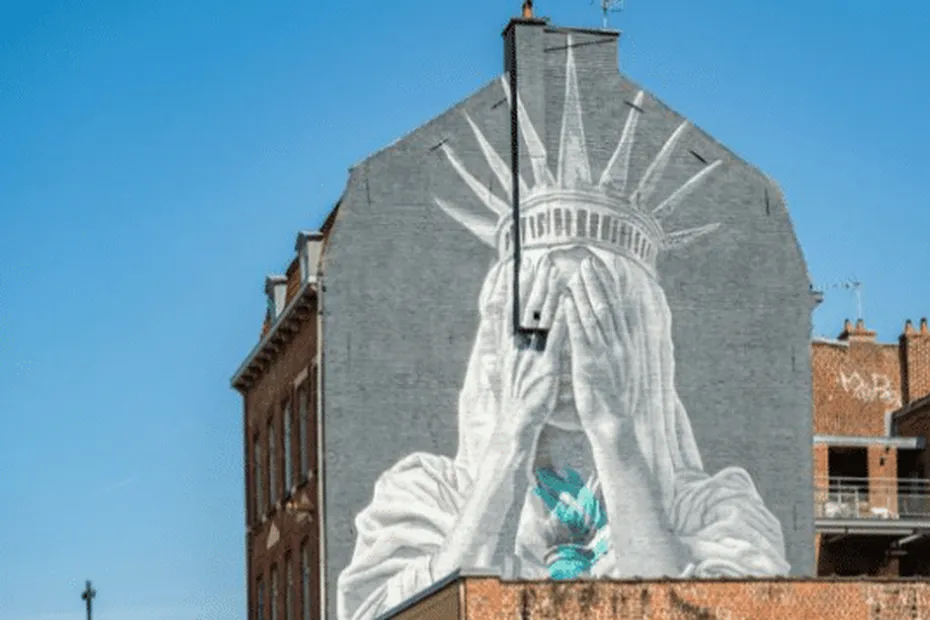
VII. Conclusion: An Assessment of the President’s Health
A comprehensive analysis of the available data—from official reports and public observations to expert analyses and historical precedents—paints a nuanced picture of President Donald Trump’s health. Rather than a medical diagnosis, this conclusion offers an expert assessment of the situation, weighing the evidence to determine the most likely reality of his condition.
- Synthesis of Physical Evidence: It is undeniable that President Trump, at 79, exhibits clear and observable signs of age-related health issues. These include the chronic bruising on his hands and the swelling in his ankles, linked to a confirmed diagnosis of chronic venous insufficiency (CVI). While the White House maintains that these conditions are benign and well-managed, its inconsistent explanations and the glaring contradictions within its own medical reports have created a significant credibility gap. The president’s physical health is clearly not « excellent » in the common sense of the term, but rather that of a 79-year-old man with several managed, and some visible, chronic conditions.
- Assessment of the Cognitive Question: The question of his cognitive health remains the most significant and uncertain concern. While there is no definitive proof of a specific neurological condition, the chasm between his « perfect » MoCA cognitive test score and his often-erratic public discourse is vast and deeply troubling. The analyses from psychiatric experts regarding tangential thought and confabulation present a serious challenge to the White House narrative. They suggest a potential decline in executive function that would warrant a much deeper examination than a simple screening test can provide.
- Evaluation of the White House Narrative: The administration’s communication on this issue has been reactive, inconsistent, and ultimately counterproductive. By dismissing all concerns as « fake news, » offering shifting explanations for visible symptoms, and relying on strategies of secrecy reminiscent of historical precedents, the White House has fueled the very speculation it sought to extinguish. As a result, public trust in the administration’s health information is likely very low.
- Final Assessment: The actual state of Donald Trump’s health is likely that of an aging man whose baseline physical condition is reasonable for his age, but which is complicated by visible and persistent ailments that the White House has struggled to explain credibly. The most profound risk lies not in the diagnosed CVI or the unexplained bruises, but in the unresolved questions about his cognitive acuity. The patterns in his public speech, as analyzed by experts, point to potential cognitive changes that are far more significant to the execution of presidential duties than swollen ankles.
The combination of these factors, filtered through the lens of historical precedents of presidential health secrecy, leads to the conclusion that the public does not have a full or transparent picture of the president’s health, and that significant, credible reasons for concern remain.
Joël-François Dumont
See Also:
- « Trump II: Le Chaos et la pitié » — (2025-0905) —
- « Cesspool and Chaos: the Russian Connection in the Epstein Affair » in Desk Russie — (2025-0728)
- « In Anchorage, the Kremlin Master’s Ascendancy over the Drunken Ship of American Diplomacy » (2025-0825) —
- « A Call for Strategic Lucidity in the Diplomatic Fog » — (2025-0818) —
- « Symbols Anchored, Substance Loose » — (2025-0816) —
- « The Drunken Ship Facing the Kremlin Iceberg — (2025-0818) —
- « La guerre grise : Dollars, data et donations » — (2025-0831) —
- « Trump pousse ses pions en Europe » — (2025-0603) —
- « The serpent » — (2025-0728) —
- « Russia’s Plan for the United States » — (2025-0413) — in DeskRussia — (2025-0329) —
- « Poutine ou l’obsession de la puissance » by Françoise Thom (Litos Édition 2022) —
- « La liste des services rendus par Trump à Moscou s’allonge chaque jour » in Le Monde p.23 — (2025-0327) —
- « It’s Time to Duck Donald ! » — (2025-0802) —
- « La désinformation ciblant les décideurs politiques (6) » — (2025-0803) —
Sources & Legends
[01] Berliner Morgenpost, « Wie schlimm steht es wirklich um Trumps Gesundheit ? » par Peter DeThier, (Dans quel état se trouve réellement la santé de Trump ?)
[02] The Independent, 5 septembre 2025, « Trump’s Public Absence Fuels Health Scrutiny Amidst Social Media Frenzy« ,
[03] Newsweek, 4 septembre 2025, « Analysis: The Anatomy of a Presidential Health Scare »,
[04] The Daily Beast, 4 septembre 2025, « Inside the West Wing Panic as #TrumpIsDead Trended »,
[05] USA Today, 4 septembre 2025, « Trump’s health under microscope after days out of public view »,
[06] Associated Press, 4 septembre 2025, « Trump resurfaces, dismisses health rumors as ‘fake news' »,
[07] New York Magazine, 26 août 2025, « What Trump’s Hands and Ankles Are Telling Us »,
[08] Vanity Fair, 29 août 2025, « The Bruises and Swelling Aren’t Going Away: Inside the Trump Health Mystery »,
[09] The Guardian, 4 septembre 2025, « Where’sTrump: how social media rumour mill alight over president’s health« ,
[10] Forbes, 4 septembre 2025, « Trump’s Dead Goes Viral As President’s Six-Day Absence From Public View Fuels Speculation »
[11] The Hill, 24 août 2025, « White House fields new questions on Trump’s health »,
[12] Fox News, 3 septembre 2025, « Trump blasts ‘sick’ rumors about his health: ‘Never felt better' »,
[13] The Washington Post, 4 septembre 2025, « A six-day absence: How the White House lost control of the narrative on Trump’s health »,
[14] Mémorandum du Dr Sean Barbabella, Médecin de la Maison-Blanche, 13 avril 2025,
[15] PolitiFact, 14 avril 2025, « Fact-checking Donald Trump’s latest cognitive test claims »,
[16] CNN, 13 avril 2025, « Trump in ‘excellent health,’ White House physician says after annual physical »,
[17] Reuters, 13 avril 2025, « Trump is in ‘excellent health,’ physically and cognitively, doctor says »,
[18] WebMD, 28 août 2025, « Experts Weigh In: What Could Be Causing Trump’s Symptoms? », https://www.google.com/search?q=https://www.webmd.com/news/20250828/experts-weigh-in-trump-symptoms
[19] The New York Times, 27 août 2025, « A President’s Health Is on Display, Whether He Likes It or Not »,
[20] Mayo Clinic, « Easy bruising: Why it happens »,
[21] ABC News, 19 janvier 2018, « Trump boasts of acing cognitive test, says he’s a ‘very stable genius' »,
[22] The Atlantic, 25 mai 2025, « I’m a Psychiatrist, and I’m Very Worried About Trump’s Mental State »,
[23] The Independent, 20 janvier 2024, « Trump confuses Nikki Haley with Nancy Pelosi in verbal slip-up »,
[24] Newsweek, 9 juin 2025, « Donald Trump Stumbles on Air Force One Stairs, Sparking Biden Comparisons »,
[25] The Independent, 9 juin 2025, « Video of Trump stumbling on Air Force One steps goes viral »,
[26] The Daily Mail, 9 juin 2025, « Trump nearly FALLS climbing the stairs to Air Force One »,
[27] The Mirror, 9 juin 2025, « Donald Trump seen stumbling up Air Force One steps months after mocking Joe Biden for falls »,
[28] HuffPost, 9 juin 2025, « Trump Nearly Trips On Air Force One Stairs, And The Irony Is Just Too Much »,
[29] Business Insider, 9 juin 2025, « A video shows Trump stumbling up the stairs of Air Force One, a frequent attack line he’s used against Biden »,
[30] Mediaite, 5 septembre 2025, « The Media Finally Wakes Up to Trump’s Health After Ignoring It for Years », https://www.google.com/search?q=https://www.mediaite.com/opinion/the-media-finally-wakes-up-to-trumps-health/
[31] The Guardian, 12 février 2024, « Is the media’s focus on Biden’s age a journalistic failure? »,
[32] The New York Times, 12 février 2024, « On the Topic of Age, Is Biden Getting a Fair Shake? »,
[33] PBS, « Woodrow Wilson: A Portrait »,
[34] The Wilson Center, « The President’s Great Emancipator: Edith Bolling Wilson »,
[35] Miller Center, « Woodrow Wilson: Life After the Presidency »,
[36] White House Historical Association, « The Unseen Presidency of Edith Wilson »,
[37] Smithsonian Magazine, « When a Secret President Ran the Country »,
[38] History.com, « How Woodrow Wilson’s Wife Secretly Ran the Government After His Stroke »,
[39] FDR Presidential Library and Museum, « Franklin D. Roosevelt’s Polio »,
[40] History.com, « FDR’s ‘Splendid Deception’ of His Disability »,
[41] Smithsonian Magazine, « The Enduring Mystery of FDR’s Polio »,
[42] Time Magazine, « How the Press Hid FDR’s Disability »,
[43] The New York Times, « FDR’s Secret »,
[44] The Atlantic, « The Medical Ordeals of JFK »,
[45] PBS, « The Kennedys: The American Experience »,
[46] The JFK Library, « John F. Kennedy’s Health »,
[47] The New York Times, « The Truth About Kennedy’s Health »,
[48] The Washington Post, « What JFK’s Medical Records Reveal »,
[49] History.com, « JFK’s Secret Drug Use« ,
In-depth Analysis:
« European Security » is delivering here a scathing assessment of Donald Trump’s second term. It alleges that in just six months, Trump has systematically dismantled 80 years of Western alliance, plunging Europe into unprecedented chaos. Europe is reportedly being extorted over $100 billion monthly, reduced to a mere « vassal » while Russia, China, and North Korea benefit from global instability.
This paper casts serious doubt on President Trump’s mental and physical health, labeling him a « fragile president ». A six-day public absence around Labor Day 2025 ignited widespread « #TrumpIsDead » speculation across social media. Despite Trump’s « NEVER FELT BETTER » assertion, the White House’s reactive and inconsistent communication only fueled public distrust. His April 2025 official medical report claimed « excellent health » and a perfect 30/30 cognitive score. However, this was contradicted by a July 2025 diagnosis of chronic venous insufficiency for swollen ankles, which the April report had explicitly denied. Recurring bruises on his hands, met with evolving and implausible White House explanations, further deepened public suspicion. Independent medical experts suggest these symptoms point to an undisclosed, deeper systemic issue, rather than isolated conditions. Cognitively, his flawless MoCA score stands in stark contrast to numerous public instances of erratic speech, factual errors, and tangential thinking. Psychiatric experts, like Professor Richard A. Friedman, express serious concern, calling for rigorous neuropsychiatric evaluation. Trump’s June 2025 stumble on Air Force One stairs was politically significant, echoing his past mockery of Joe Biden.
An opportunity to draw historical parallels to past presidents like Woodrow Wilson, FDR, and JFK, whose serious health issues were concealed. These historical « praetorian guards »—loyal doctors and advisors—prioritized political image over public transparency. Dr. Sean Barbabella’s « excessively positive » reports for Trump are viewed through this lens, possibly serving as a strategic communication tool. Ultimately, the article concludes that Trump’s physical health shows clear age-related issues, poorly explained by his administration. His cognitive health raises the most troubling and unresolved questions, given the stark disparity between official claims and public performance.
The public, grappling with inconsistencies and historical precedents, likely lacks a complete and transparent picture of the president’s health. Credible and significant reasons for concern about his fitness for office persist.








